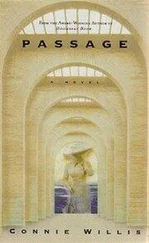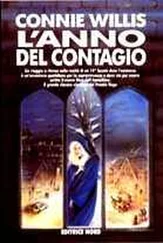Their bio said they were in their eighties, but I would have put them in their nineties, although I wondered if they were too perfect and therefore fake, like the Winnebago. But she went on wiping her hands on the dish towel the way my grandmother had when she was upset, even though I couldn’t see if her face was showing any emotion, and that action at least looked authentic.
She apparently told him the bumper looked fine because he dropped the dripping sponge into the bucket and went around behind the Winnebago. She went back inside, shutting the metal door behind her even though it had to be already at least a hundred and ten out, and they hadn’t even bothered to park under what scanty shade the palms provided.
I put the longshot back in the car.
The old man came around the front with a big plywood sign. He propped it against the vehicle’s side. “The Last of the Winnebagos,” the sign read in somebody’s idea of what Indian writing should look like. “See a vanishing breed. Admission—Adults—$8.00, Children under twelve—$5.00 Open 9 A.M. to Sunset.”
He strung up a row of red and yellow flags, and then picked up the bucket and started toward the door, but halfway there he stopped and took a few steps down the parking lot to where I thought he probably had a good view of the road, and then went back, walking like an old man, and took another swipe at the bumper with the sponge.
“Are you done with the RV yet, McCombe?” Ramirez said on the car phone.
I slung the camera into the back. “I just got here. Every tanker in Arizona was on Van Buren this morning. Why the hell don’t you have me do a piece on abuses of the multiway system by water haulers?”
“Because I want you to get to Tempe alive. The governor’s press conference has been moved to one, so you’re okay. Have you used the eisenstadt yet?”
“I told you, I just got here. I haven’t even turned the damned thing on.”
“You don’t turn it on. It self-activates when you set it bottom down on a level surface.”
Great. It had probably already shot its hundred-frame cartridge on the way here.
“Well, if you don’t use it on the Winnebago, make sure you use it at the governor’s conference,” she said. “By the way, have you thought any more about moving to investigative?”
That was why Sun-co was really so interested in the eisenstadt. It had been easier to send a photographer who could write stories than it had been to send a photographer and a reporter, especially in the little one-seater Hitoris they were ordering now, which was how I’d gotten to be a photojournalist.
And since that had worked out so well, why send either? Send an eisenstadt and a DAT deck and you won’t need a Hitori and way-mile credits to get them there. You can send them through the mail. They can sit unopened on the old governor’s desk, and after a while somebody in a one-seater who wouldn’t have to be either a photographer or a reporter can sneak in to retrieve them and a dozen others.
“No,” I said, glancing back up the hill. The old man gave one last swipe to the front bumper and then walked over to one of the zoo’s old stone-edged planters and dumped the water bucket on a tangle of prickly pear, which would probably think it was a spring shower and bloom before I made it up the hill. “Look,” I said, “if I’m going to get any pictures before the touristas arrive, I’d better go.”
“I wish you’d think about it. And use the eisenstadt this time. You’ll like it once you try it. Even you’ll forget it’s a camera.”
“I’ll bet,” I said. I looked back down the multiway. Nobody at all was coming now. Maybe that was what all the Amblers’ anxiety was about—I should have asked Ramirez what their average daily attendance was and what sort of people used up credits to come this far out and see an old beat-up RV. The curve into Tempe alone was three point two miles. Maybe nobody came at all. If that was the case, I might have a chance of getting some decent pictures. I got in the Hitori and drove up the steep drive.
“Howdy,” the old man said, all smiles, holding out his reddish-brown freckled hand to shake mine. “Name’s Jake Ambler. And this here’s Winnie,” he said, patting the metal side of the RV, “last of the Winnebagos. Is there just the one of you?”
“David McCombe,” I said, holding out my press pass. “I’m a photographer. Sun-co. Phoenix Sun , Tempe-Mesa Tribune , Glendale Star, and affiliated stations. I was wondering if I could take some pictures of your vehicle?” I touched my pocket and turned the taper on.
“You bet. We’ve always cooperated with the media, Mrs. Ambler and me. I was just cleaning old Winnie up,” he said. “She got pretty dusty on the way down from Globe.” He didn’t make any attempt to tell his wife I was there, even though she could hardly avoid hearing us, and she didn’t open the metal door again. “We been on the road now with Winnie for almost twenty years. Bought her in 1989 in Forest City, Iowa, where they were made. The wife didn’t want to buy her, didn’t know if she’d like traveling, but now she’s the one wouldn’t part with it.”
He was well into his spiel now, an open, friendly, I-have-nothing-to-hide expression on his face that hid everything. There was no point in taking any stills, so I got out the vidcam and shot the TV footage while he led me around the RV.
“This up here,” he said, standing with one foot on the flimsy metal ladder and patting the metal bar around the top, “is the luggage rack, and this is the holding tank. It’ll hold thirty gallons and has an automatic electric pump that hooks up to any waste hookup. Empties in five minutes, and you don’t even get your hands dirty.” He held up his fat pink hands, palms forward, as if to show me. “Water tank,” he said, slapping a silver metal tank next to it. “Holds forty gallons, which is plenty for just the two of us. Interior space is a hundred fifty cubic feet with six feet four of headroom. That’s plenty even for a tall guy like yourself.”
He gave me the whole tour. His manner was easy, just short of slap-on-the-back hearty, but he looked relieved when an ancient VW bug came chugging catty-cornered up through the parking lot. He must have thought they wouldn’t have any customers, either.
A family piled out, Japanese tourists, a woman with short black hair, a man in shorts, two kids. One of the kids had a ferret on a leash.
“I’ll just look around while you tend to the paying customers,” I told him.
I locked the vidcam in the car, took the longshot, and went up toward the zoo. I took a wide-angle of the zoo sign for Ramirez. I could see it now. She’d run a caption like, “The old zoo stands empty today. No sound of lion’s roar, of elephant’s trumpeting, of children’s laughter, can be heard here. The old Phoenix Zoo, last of its kind, while just outside its gates stands yet another last of its kind. Story on page 10.” Maybe it would be a good idea to let the eisenstadts and the computers take over.
I went inside. I hadn’t been out here in years. In the late eighties there had been a big flap over zoo policy. I had taken the pictures, but I hadn’t covered the story since there were still such things as reporters back then. I had photographed the cages in question, and the new zoo director who had caused all the flap by stopping the zoo’s renovation project cold and giving the money to a wildlife protection group.
“I refuse to spend money on cages when in a few years we’ll have nothing to put in them. The timber wolf, the California condor, the grizzly bear, are in imminent danger of becoming extinct, and it’s our responsibility to save them, not make a comfortable prison for the last survivors.”
Читать дальше












